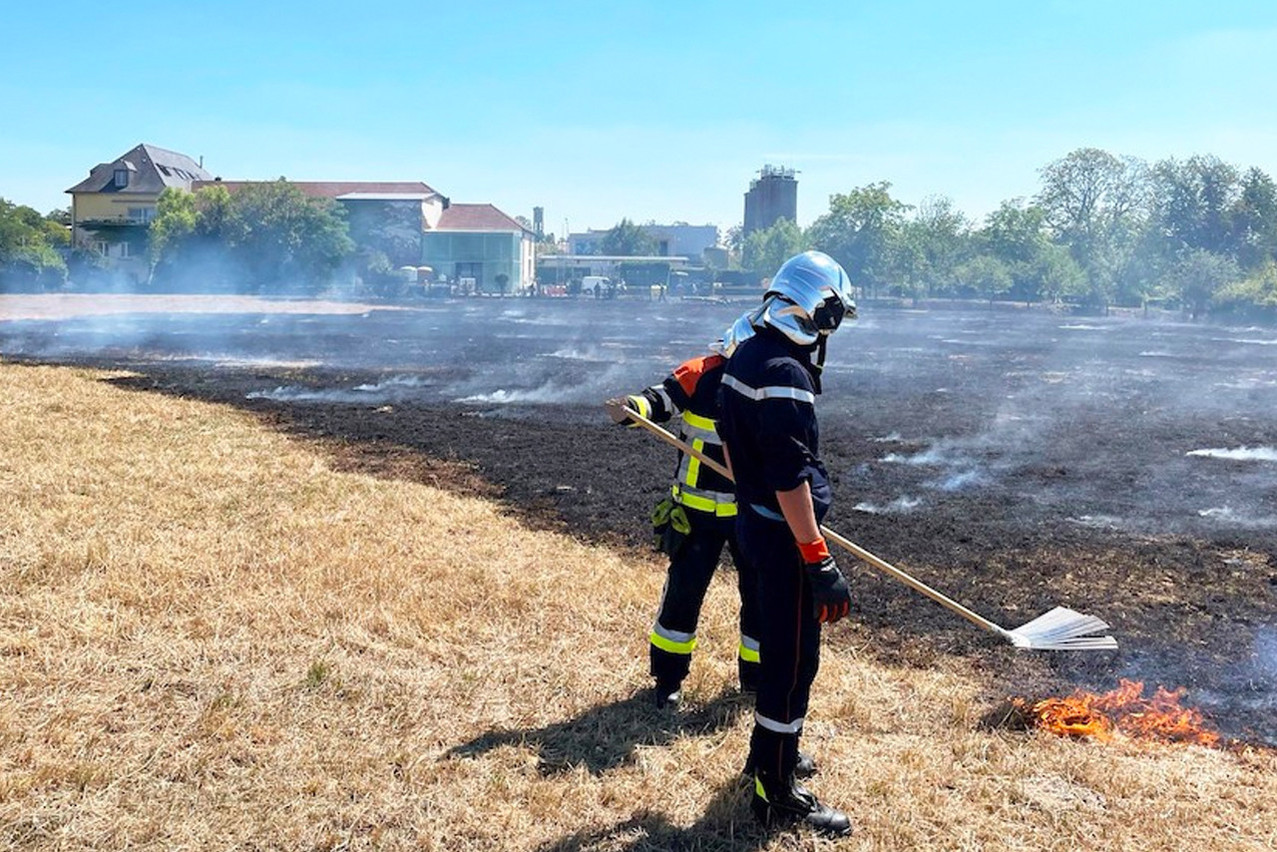In 2022, CGDIS was called out 87 times to tackle vegetation fires. This is already more than the total in any of the three previous years: 73 interventions in 2019, 83 in 2020 and only 30 in 2021, a particularly wet year.
The rhythm isn’t expected to slow down, since these types of interventions, in the middle of a drought and heat wave, are now taking place on a daily basis. "We are already certainly above 90," says Cédric Gantzer, head of the department at the CGDIS.
These 87 interventions include fires ranging in size from a few square metres of grass burnt on the side of a road by a cigarette to fires charring entire harvests or larger forest fires.
But compared to southern European countries, Luxembourg has so far been spared. "We usually see images of forest fires burning to the tips of trees in Europe. But in Luxembourg, we are rather confronted with vegetation fires, namely field fires or harvest fires. And if the fire spreads to the forest, it is the undergrowth and bushes, that burn down to the level of the trunks," explains Gantzer. "We have not yet been confronted with real forest fires on a recurring basis.”
Close to the flames
In recent years, however, a few fires have made their mark. In 2019, a large harvest fire spread into the forest and a petrol station had to be evacuated. In 2020, hikers surrounded by a fire at Lake Haute-Sûre had to be evacuated via the water.
This year, there were a few large fires. But they were successfully brought under control, thanks to advance preparation, says Gantzer. "We have put measures in place internally to better prepare ourselves for this type of new situation.” Although Luxembourg has not yet been affected, the trend is there: major forest fires can no longer be excluded in northern Europe.
In the grand duchy, CGDIS interventions are still adapted to vegetation fires and therefore exclusively land-based. The tactics followed mainly require manpower and water. "We send our personnel with about twenty litres of water on their backs, to go into the undergrowth, as close as possible to the flames," explains Gantzer. "When the flames don't exceed a metre, we can attack them by tapping them with a special rake, for example."
Very defensive tactics
Luxembourg's tactics are "very defensive", according to Gantzer: "When the 112 operator receives an alert, we don't know what [the issue] is. But, as a preventive measure, we tend to immediately send a lot of resources to the scene in order to quickly bring the outbreak under control and, above all, to prevent it from spreading. The main thing is to hit it fast and hard.”
It is also a question of covering the territory well with equipment. "At national level, we have vehicles dedicated to this type of intervention--all-terrain vehicles or vehicles with large water capacities--strategically placed throughout the country so that they can arrive as reinforcements," explains Gantzer.
However, there is no need for airborne resources such as Canadair water bombers. These are necessary in the event of monumental fires, but would not reach the source of the fire, would be expensive and would not have any space to recharge their tanks. If required, a European civil protection mechanism exists. Specialists, airborne resources, but above all "columns" of firefighters, like in each department in France, could be mobilised by neighbouring countries if needed in Belgium or Luxembourg.
Don't throw away your cigarettes!
But the best way to avoid such a situation is to prevent it, which requires caution on the part of the population. In fact, most fires are the result of human activity. The advice is therefore clear, as CGDIS repeated during a at the beginning of the summer: do not throw cigarettes into nature, under any circumstances. Do not make open fires, except in places specifically designed for this purpose. Have a container of water, such as a bucket, ready when barbecuing. Do not throw glass in the open. Or, a lesser-known tip: don't drive through a field or forest path with tall grass in an unsuitable vehicle, as the burning engine and exhaust pipe can quickly start a fire.
And if you see a fire starting, the instructions are: get to safety, inform people in the vicinity and, at the same time, call 112 to provide the most precise location of the fire possible.
This story was first published in French on . It has been translated and edited for Delano.
